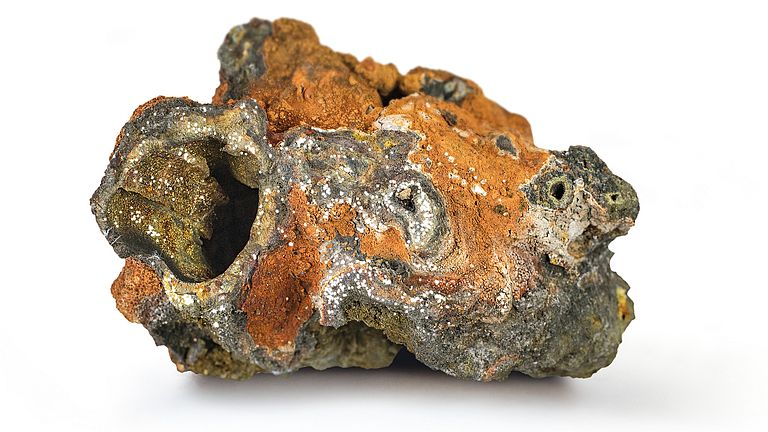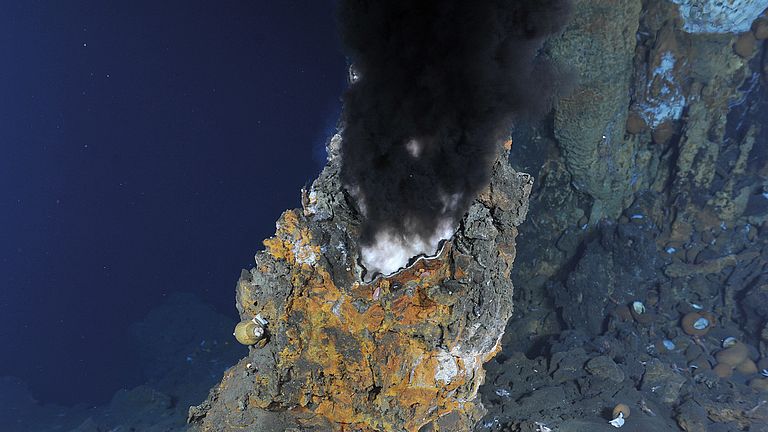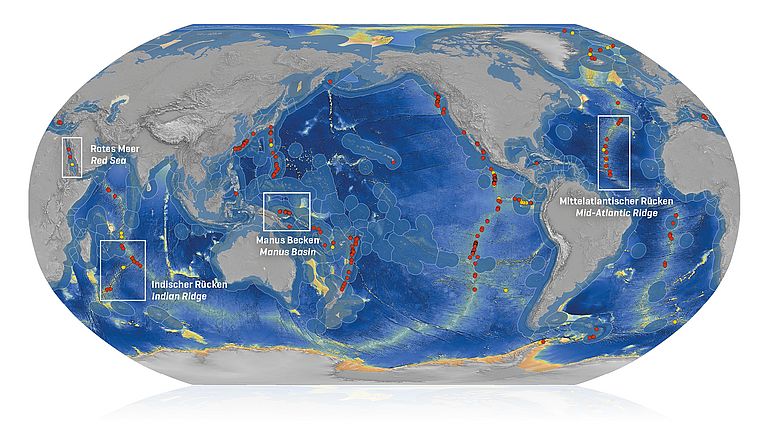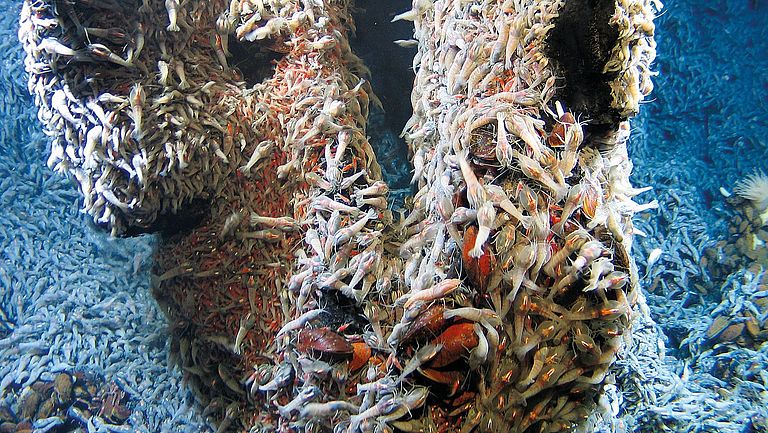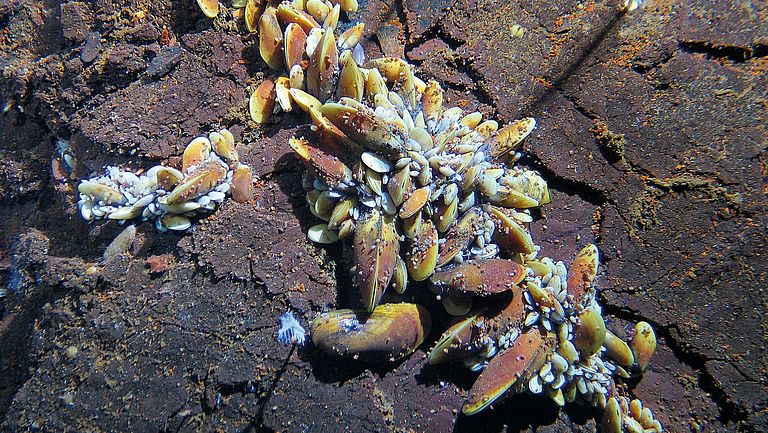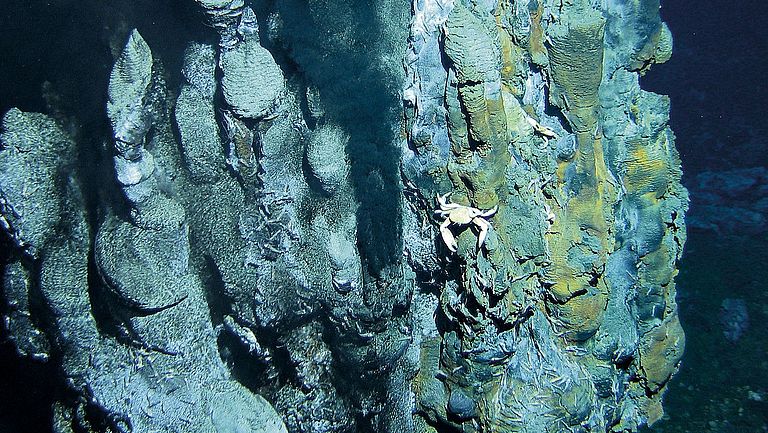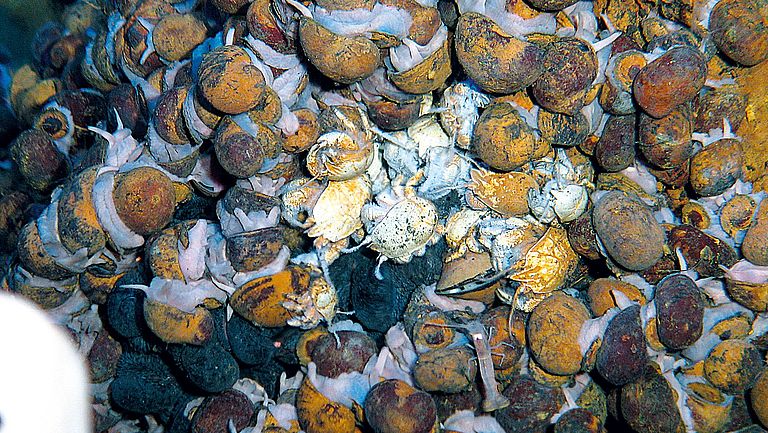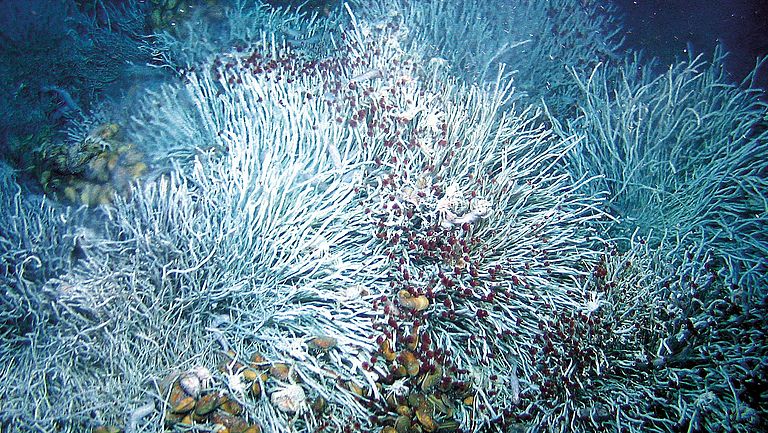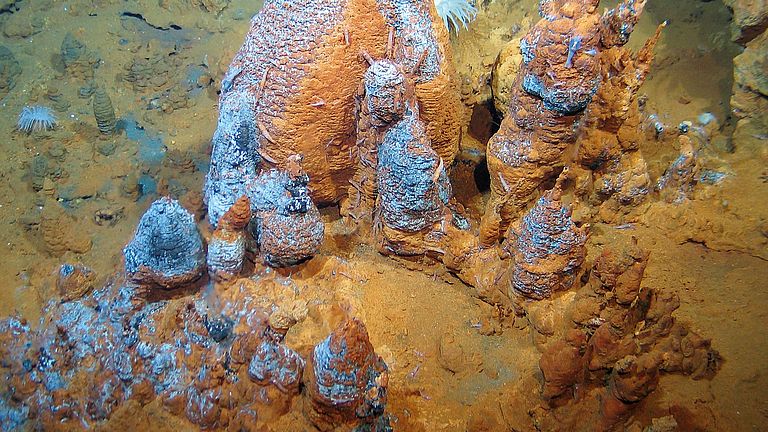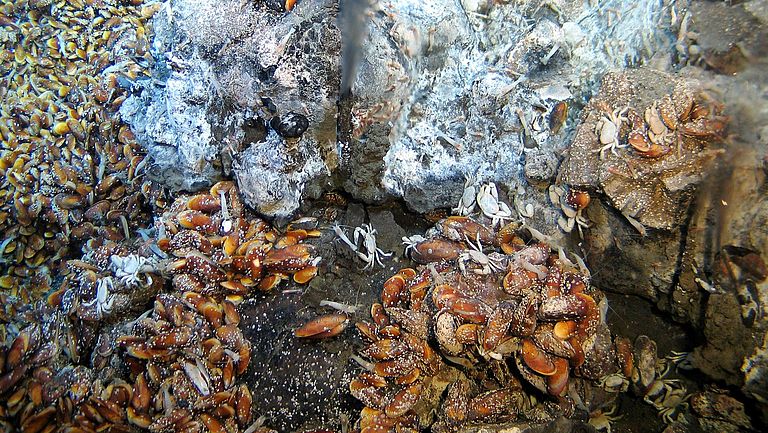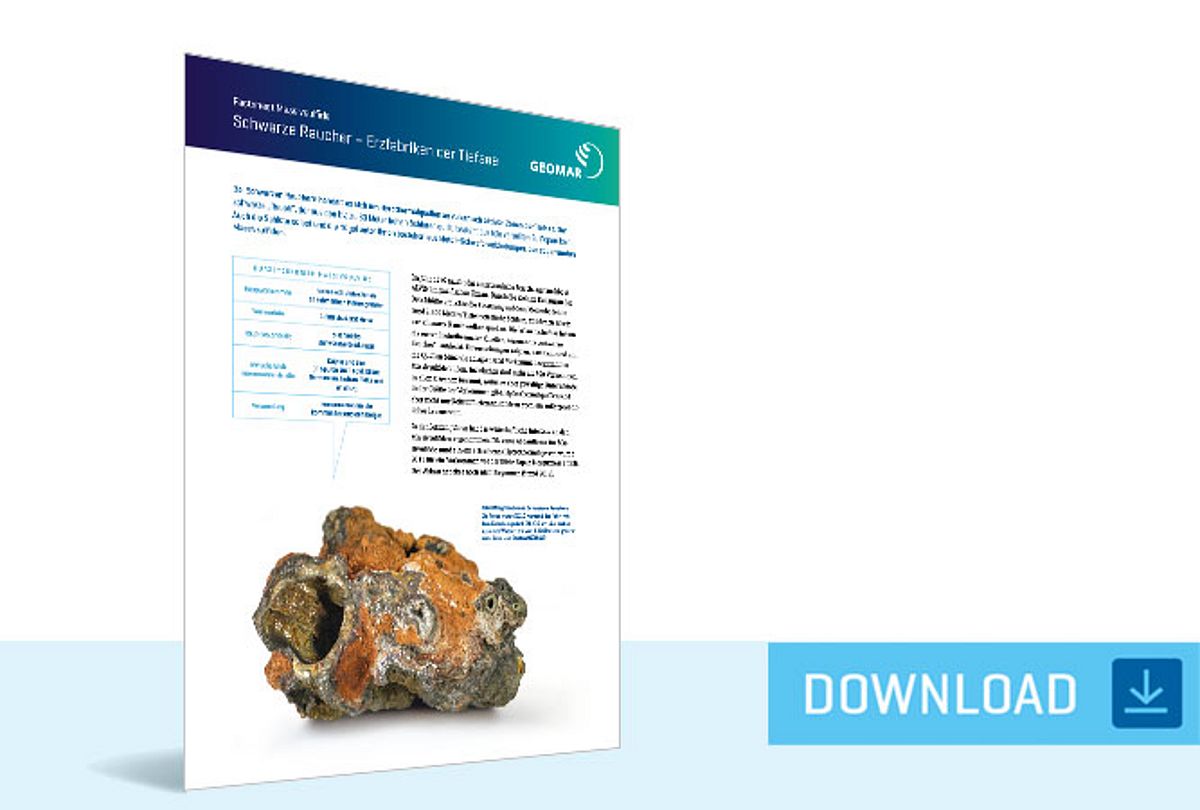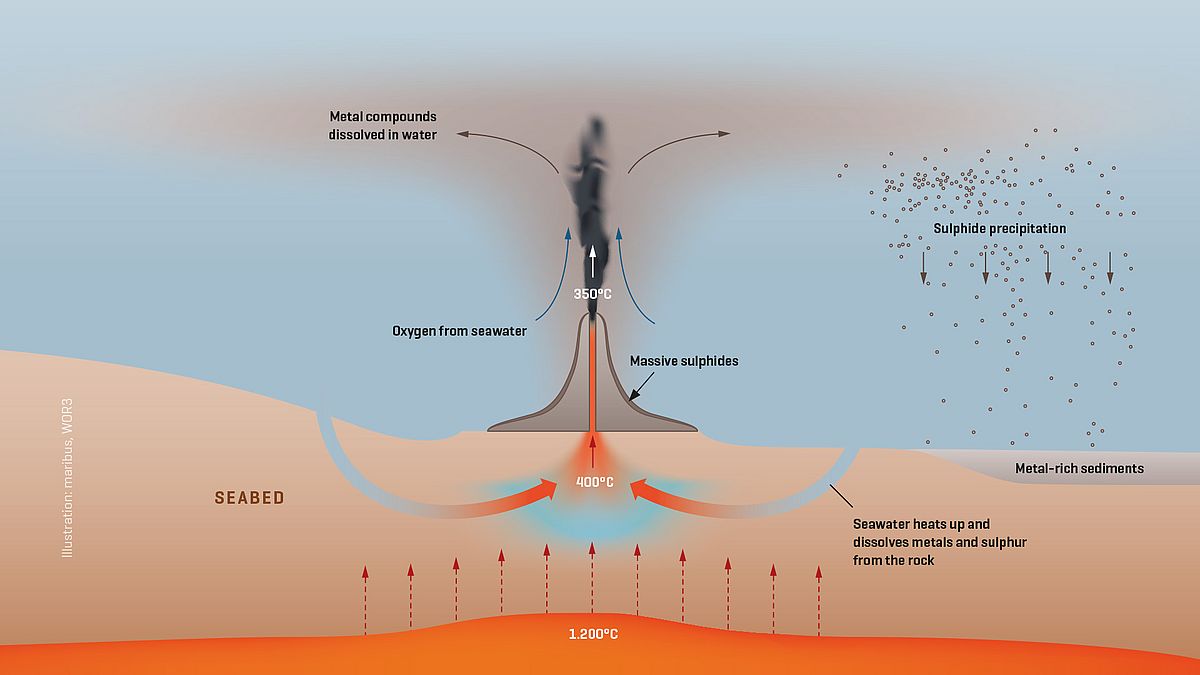GEOMAR Helmholtz Centre for Ocean Research Kiel
Communication and Media
Fon 0431 600-2807
Mail media(at)geomar.de
Massive Sulphides – Source of Raw Material at Black Smokers
Black Smokers are hydrothermal vents in volcanically active zones of the deep ocean. The black “smoke”, which exits from the up to 30 meter high chimneys, consists of finely distributed sulphide particles. The chimneys themselves and the mounds they are commonly located on also consist of metal-sulphur compounds, the so-called massive sulphides.
In 1979, the American research submarine Alvin dived into the Pacific Ocean. Through the small portholes of the pressurized hull, the crew saw meter-high chimneys on the seabed at a depth of around 2,600 meters, from which apparently black clouds of smoke were expelled. The scientists had discovered the first hydrothermal vents, so-called “Black Smokers”. Investigations showed that minerals were deposited around the springs, forming deposits of so-called massive sulphides. In the meantime, more than 410 occurrences are known in all oceans, although there are enormous differences in the size of these features. Hydrothermal vents are not only a source of raw materials, but also an extraordinary habitat.
In recent years the economic interest in massive sulphides has increased. The first mining licence for massive sulphides around a weakly active hydrothermal system was granted in 2011 for a deposit off the coast of Papua New Guinea. However, commercial mining has not begun yet.
As things stand, only a few of the known massive sulphide deposits appear to have sufficient size and metal content to be exploited economically. New exploration technologies, still to be developed, can extend the search beyond small, active deposits and help discover large, inactive deposits beyond volcanically active zones. Nevertheless, the raw material potential of massive sulphides appears to be rather small compared to that of manganese nodules or cobalt-rich manganese crusts. However, due to the three-dimensional character of the deposits, the environmental impact of mining is presumably significantly lower than the large areas to be expected from mining nodules and crusts.
Biodiversity at Hydrothermal Vents
The first life on Earth may have originated at the black smokers in the deep sea. Here, over millions of years, an ecosystem has developed that is perfectly adapted to the conditions that are actually hostile to life. In an environment of absolute darkness, with extreme water pressure as well as water enriched with toxic metal compounds and temperatures of more than 350 degrees Celsius, there is a unique community of species.
Symbioses form the basis of this ecosystem. Bakteria obtain their energy, independent of light, from the conversion of sulfur and methane, the so-called chemosynthesis. Only thus microorganisms can use this "dark energy," in which no solar energy is used for life. Deep-sea animals such as crabs and clams cannot perform chemosynthesis themselves, but through their close community with the microorganisms, the animals gain access to nutrients that the bacteria have produced through chemosynthesis.
Individual animal species can harbor a great many different bacteria as subtenants. For example, up to 16 different strains of bacteria reside in the gills of a deep-sea mussel, each with its own capabilities and strengths. Thanks to this diversity of symbiotic partners, the mussel can adapt excellently to its constantly changing environment.
Video: Black Smokers – Ore factories of the Deep Sea
At the bottom of the sea, in a depth of several thousand metres, black smokers bring up valuable raw materials from inside the earth. Their metre-high vents seem to give off smoke like under water industrial chimneys.


